|
|
BRIEF HISTORY OF THE MANTA SHAPE - Page 3 Compiled 2005 - 2006 |
|
|
BRIEF HISTORY OF THE MANTA SHAPE - Page 3 Compiled 2005 - 2006 |
NAVIGATION
|
THE EMERGENCE OF THE MANTA (2005)
|
|
The surge of inspiration that drove Toku to create the Floppy Horn towards the end of 2004 carried over into early 2005, when his improvisational magic transformed the horn form into a shape he dubbed "The Manta." Rounding the top of the bowl, splaying out its sides, and re-contouring its base might have begun as an experiment in exaggeration, but in the event, Toku came up with a restructuring of the venerable Danish shape whose new lines would inspire a long sequence of innovative carvings.
From the front, the connections between Floppy Horn and Manta are easily seen. The photograph below shows Toku's course of development from Floppy Horn (SPC 316, 2004), on the far right, to the first Manta (SPC 326, 3 snails, February 2005), his first Hiro-grade pipe, the Manta with ivory , (SPC 349, March 2005), and a highly-flexed and ornamented horn-manta form called "Spanish Dancer" that Toku brought to Chicago in May 2005 (SPC 387, 3 snails). |
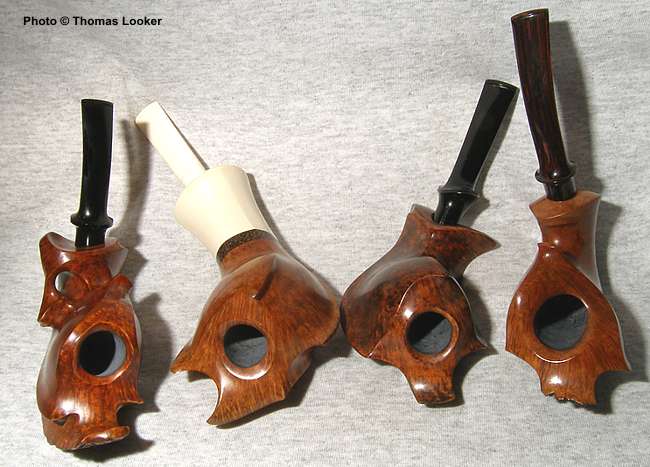

|
FROM FLOPPY HORN TO MANTA
In the Manta, Toku both softened and exaggerated certain lines and forms in the floppy horn. The change in character suggests the organic suppleness of the marine animal, while the flexibility of the horn's shape brings to my mind a sculpture made out of clay. |

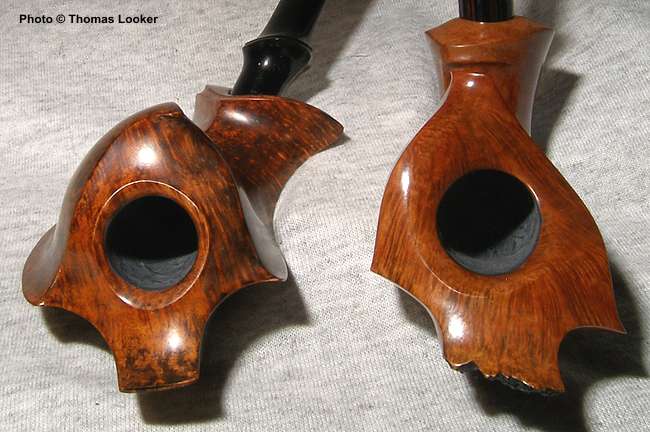
|
Among the most intriguing aspects of the Manta are its sharp sides. Pipes don't usually have such edges to them, and it certainly can be argued that in carving this initial Manta, Toku's enthusiasm for the shape he was discovering on his sanding wheel may have momentarily overcome his sense of practicality. Later Mantas would fit in the hand with less angularity. On the other hand, the "edginess" of this composition makes it one of Toku's most distinctive creations; it's also an extremely beautiful piece. |
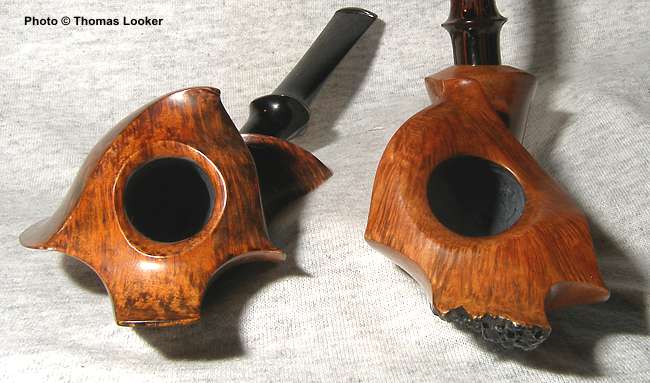
|
It's particularly fascinating to see how Toku stretches the bottom of his Floppy Horn to achieve the distinctive Manta shape. Again, by simply extending a line and accentuating a curve, Toku was able to "see" the Manta within the horn. |
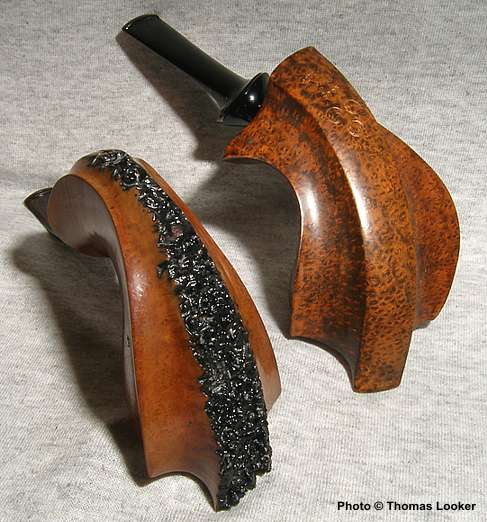
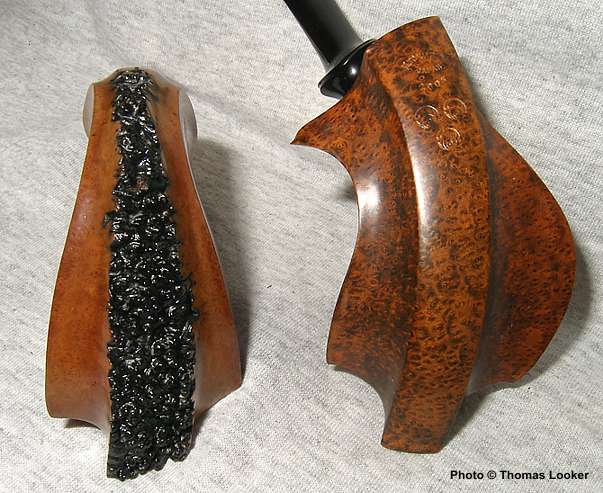
|
SIDESTEP: HORN AND MANTA INTO "SPANISH DANCER"
In characteristic fashion, Toku's first Manta led him in more than one creative direction: Toku usually improvises "polyphonically." His dominant theme developed into the huge Manta with Ivory, SPC 349 (2005) and eventually into even more monumental designs, like Giant Manta, SPC 484 (2006). At the same time, Toku pursued a smaller but no less virtuosic variation, the "Spanish Dancer" (named by the folks at Smokingpipes after the sea slug that's a particularly graceful swimmer and fancy dresser). In these ornate and fascinating pipes, Toku drew together thematic strands from both the Floppy Horn and the Manta.
|
|
"SPANISH DANCERS" - May 2005 Left: SPC 392, Hiro, Right: SPC 387, 3 snails
|
|
Left: SPC 387, 3 snails, Right: SPC 392, Hiro
|
|
Though maintaining a narrower, hornish profile for the upper bowl, Toku injects some of the lateral energy of the Manta shape by defining sharp "skirt edges" for the Dancers and increasing certain asymmetrical, almost Dali-esque exaggerations in the overall forms. |
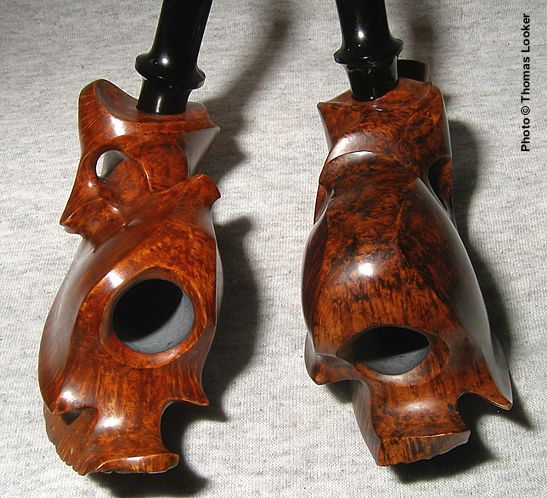
Above and below - Left: SPC 387, 3 snails -
Right: SPC 392, Hiro

THIS DISCUSSION OF THE SPANISH DANCERS CONCLUDES ON THE NEXT PAGE
NAVIGATION
END OF
BRIEF HISTORY OF THE MANTA SHAPE - 3